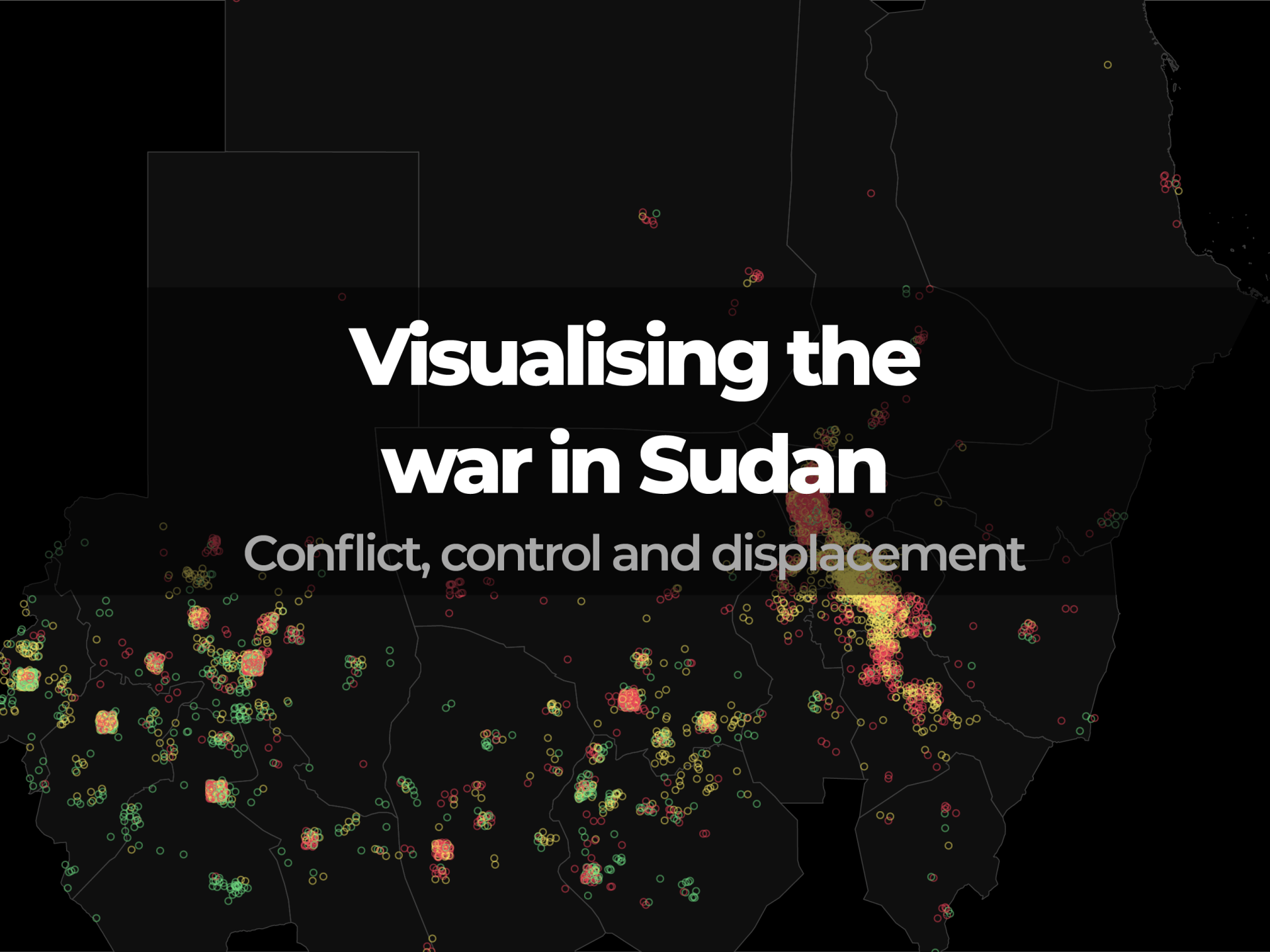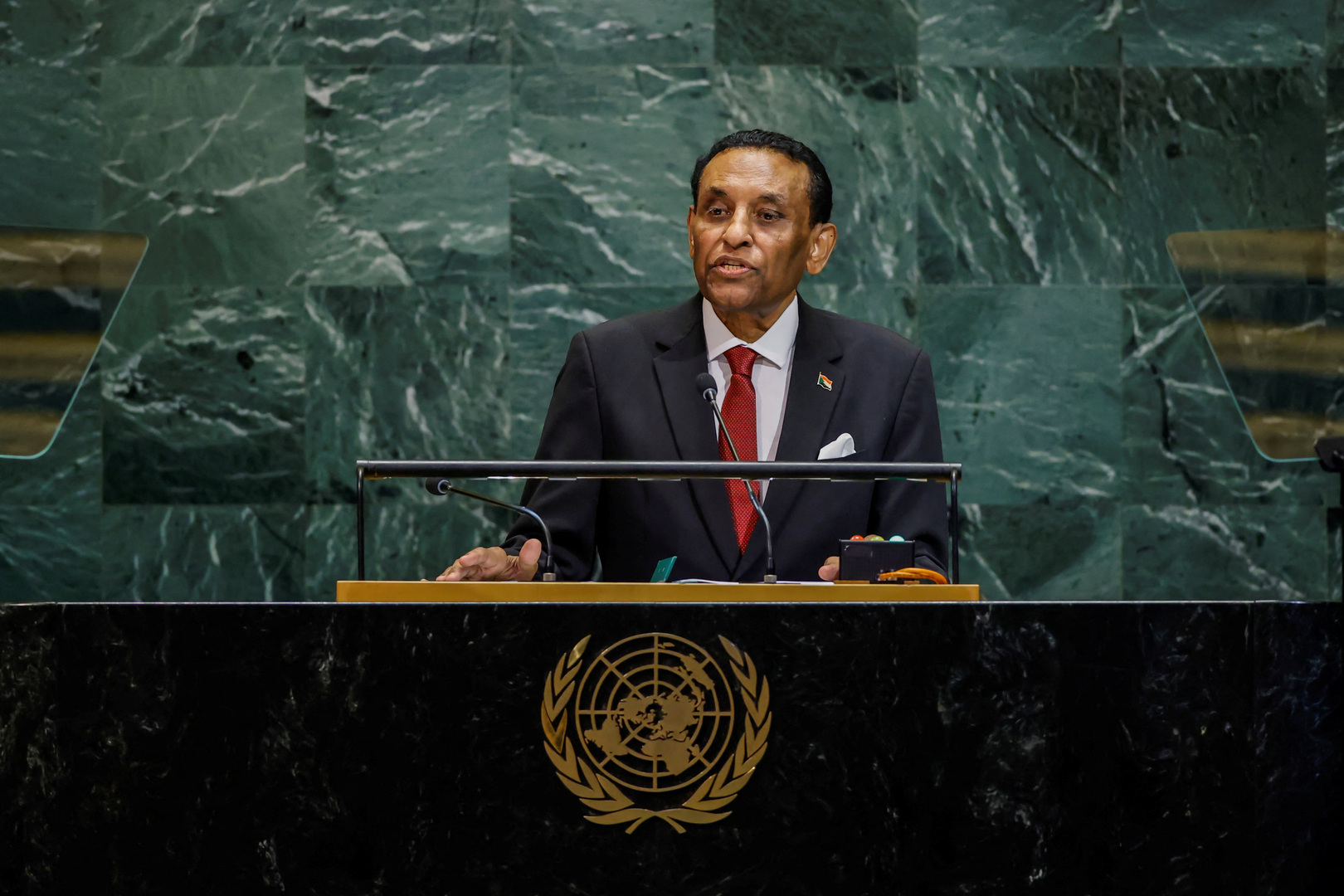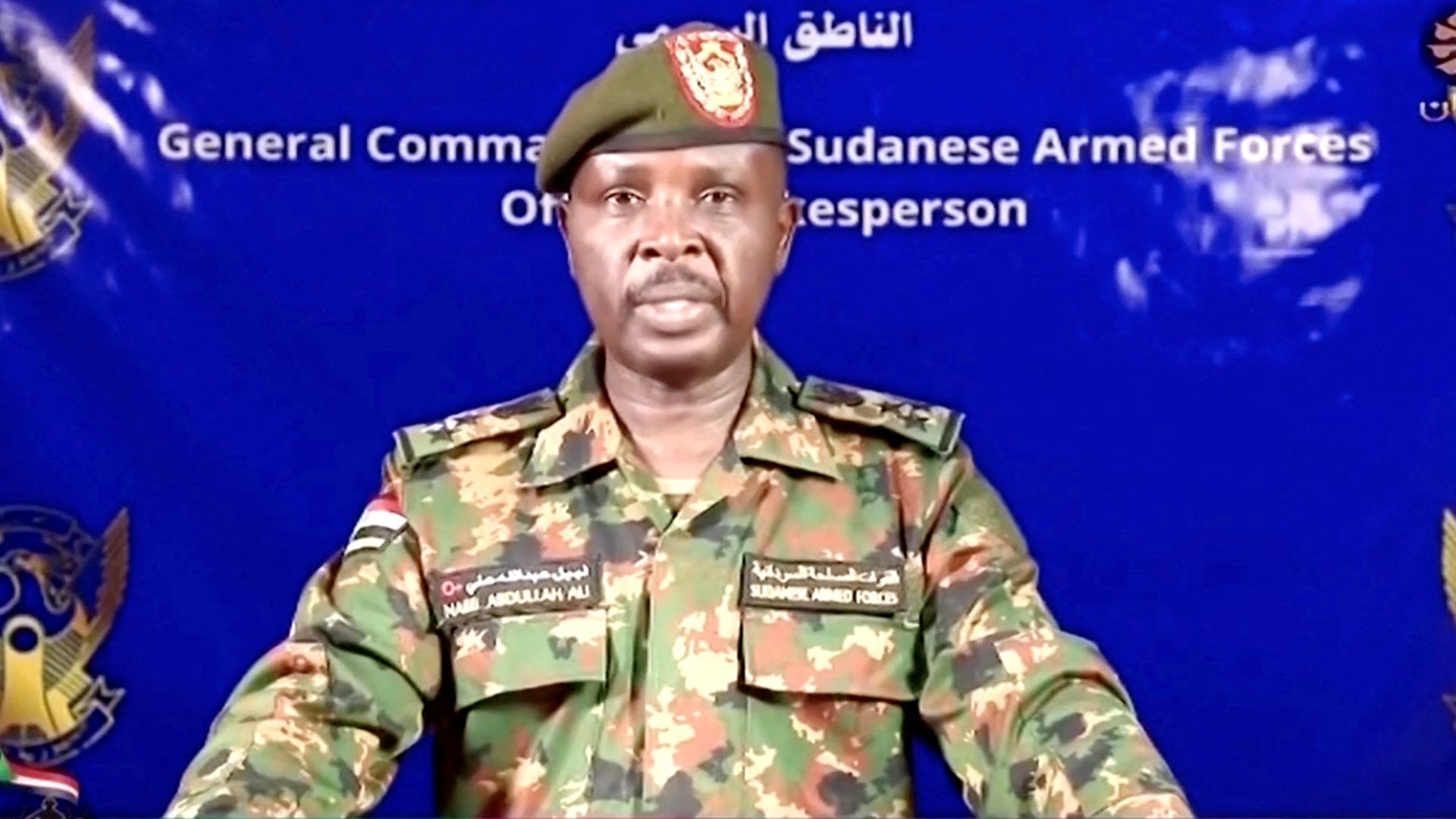
The war in Sudan is nearing the two-year mark and the enormous suffering of its people continues.
As two powerful armed rivals tear the country apart in what has been termed an “existential battle”, millions have had to flee their homes, hundreds of thousands have been killed, and countless others are going hungry or being abused.
On April 15, 2023, Sudan was plunged into conflict as longstanding tensions between army chief Abdel Fattah al-Burhan and paramilitary Rapid Support Forces (RSF) leader Mohamed Hamdan “Hemedti” Dagalo erupted into war.
Nearly 9,000 recorded attacks
Between April 15, 2023, and October 25, 2024, the warring sides exchanged a total of 8,942 attacks, averaging 16 a day, according to data from the Armed Conflict Location and Event Data Project (ACLED), a crisis mapping organisation.
Geographically, three-quarters of all attacks have centred around three main regions:
Khartoum
More than half of all attacks, 4,858 or 54 percent of all recorded incidents, have been documented around the capital, Khartoum.
Sudan’s army has in recent months launched a major offensive there to reclaim areas seized by the RSF at the beginning of the conflict.
Gezira State
Gezira, Sudan’s agricultural hub south of Khartoum, has seen 1,077 attacks, or about 12 percent of recorded incidents.
North Darfur
Darfur – a western region divided into five states – and its people have long suffered from internal conflict. In North Darfur, there were at least 818 attacks, or 9 percent of all recorded incidents.
Rest of Sudan
The remaining 25 percent of the fighting has been spread across the country, including in South Darfur (361 attacks), North Kordofan (335 attacks) and West Darfur (269 attacks).
The map below highlights the locations of these attacks.

Tens of thousands of people killed
According to ACLED, at least 24,000 people have been reported killed across Sudan, though the actual death toll is likely much higher – especially when accounting for indirect deaths such as the spread of disease, malnutrition and lack of adequate healthcare.
About one-third of recorded deaths have occurred in Khartoum, which has the highest casualty rate.
West Darfur follows with 17 percent and North Darfur with 15 percent, highlighting the severe toll of continuing violence in these areas.
Exchange of fire
According to ACLED, Sudan’s army has carried out 4,805 attacks, accounting for 54 percent of reported incidents.
The RSF has conducted 3,069 attacks, making up 34 percent of total recorded incidents.
Other groups, including Darfur Communal Militia, Darfur Arab Militia, Sudan People’s Liberation Movement, Twic Clan Militia and others have been behind the remaining 1,068 (12 percent) of attacks.
Timeline of attacks
After months of tensions, on April 15, 2023, heavy gunfire and explosions erupted in Khartoum, a city of 10 million people.
Gunfire was heard in the vicinity of army headquarters and the Ministry of Defence, the presidential palace and Khartoum International Airport.
By the end of August 2023, attacks reached their highest intensity, with 675 combined attacks recorded.
That month, the UN reported one million people had fled the country and internal displacement exceeded 3.4 million.
Following a brief decline in attacks, violence again intensified in January 2024.
By then, the UN had reported that eight million people were displaced by the war as famine loomed across the country.
On September 26, 2024, the Sudanese army carried out air raids against RSF positions in the capital in its biggest such assault in months.

Who controls what in Sudan?
The conflict in Sudan has fragmented Africa’s third-largest country, primarily divided between the army, the RSF and several smaller armed groups.
The RSF, whose power base is in Darfur, have largely driven the army out of that region and now control most of it.
The main exception is el-Fasher, North Darfur’s capital, which remains under the control of former rebel groups.
Meanwhile, both groups have continued to fight over Khartoum with the army holding the northern parts of the capital, as well as several strategic nearby areas including White Nile, Blue Nile and Gadarif states.

14 million people displaced
The UN has warned that Sudan is facing the world’s worst displacement crisis, as the war continues with no end in sight.
About 30 percent of Sudan’s 48 million population – more than 14 million people – have been forced to flee their homes due to the war.
Of those, at least 11 million people have been displaced within the country, according to the latest figures from the International Organization for Migration (IOM).
At least three million people have crossed international borders, placing immense strain on neighbouring countries, such as Chad, South Sudan, and Egypt.
The main regions of origin for displaced people are:
- Khartoum: 3.7 million displaced (33 percent of the total)
- South Darfur: 2.1 million displaced (19 percent)
- North Darfur: 1.6 million displaced (14.3 percent)
The main destinations for the internally displaced people are:
- South Darfur: 1.8 million displaced (17 percent of the total)
- North Darfur: 1.5 million displaced (14 percent)
- Gedaref: about one million displaced (9 percent)
Despite numerous attempts to negotiate a ceasefire, the violence shows little sign of abating, leaving millions in urgent need of assistance.







